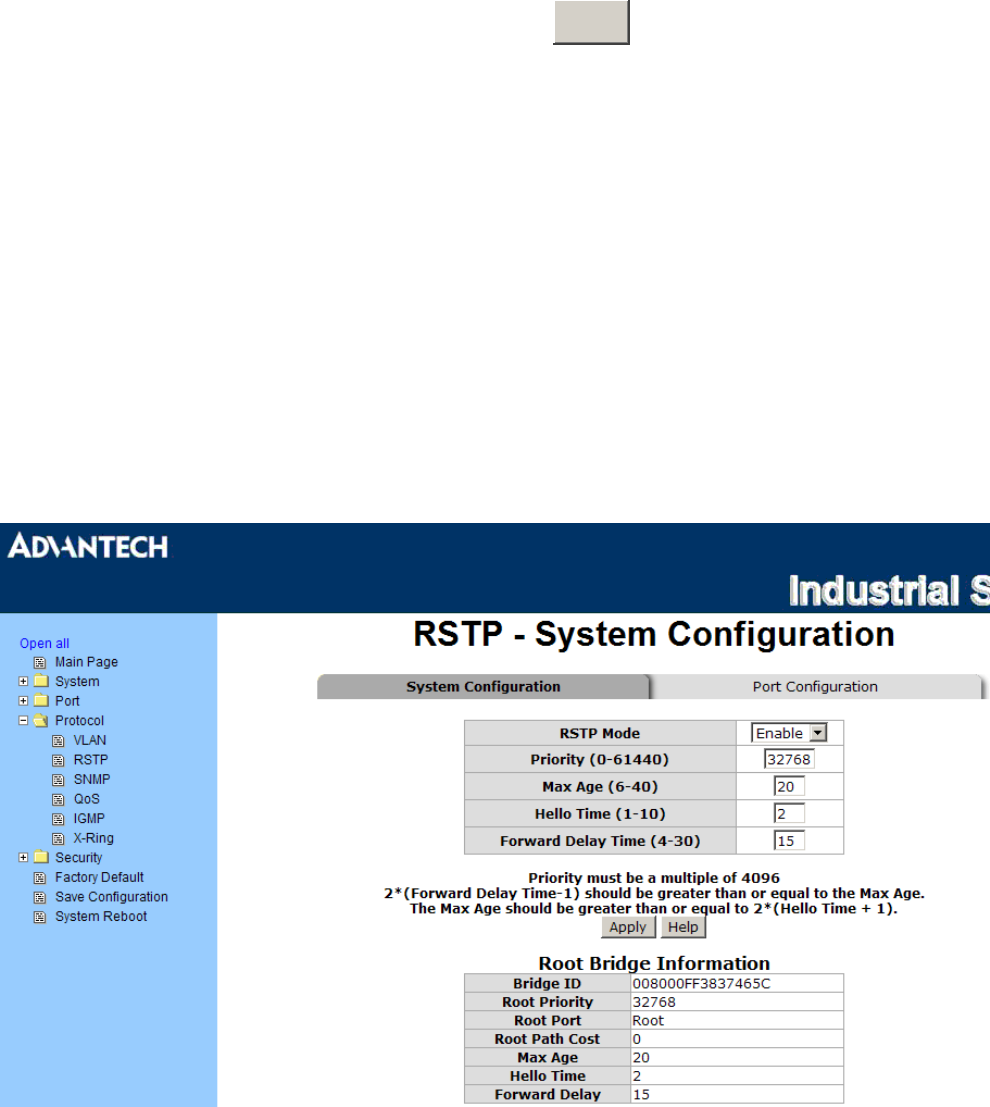
65 Chapter3
Rapid Spanning Tree
The Rapid Spanning Tree Protocol (RSTP) is an evolution of the Spanning Tree Protocol and provides for
faster spanning tree convergence after a topology change. The system also supports STP and the
system will auto detect the connected device that is running STP or RSTP protocol.
RSTP - System Configuration
•
User can view spanning tree information about the Root Bridge
•
User can modify RSTP state. After modification, click
Apply
button
¾ RSTP mode: user must enable or disable RSTP function before configure the related
parameters
¾ Priority (0-61440): a value used to identify the root bridge. The bridge with the lowest value
has the highest priority and is selected as the root. If the value changes, user must reboot the
switch. The value must be multiple of 4096 according to the protocol standard rule
¾ Max Age (6-40): the number of seconds a bridge waits without receiving Spanning-tree
Protocol configuration messages before attempting a reconfiguration. Enter a value between 6
through 40
¾ Hello Time (1-10): the time that controls switch sends out the BPDU packet to check RSTP
current status. Enter a value between 1 through 10
¾ Forward Delay Time (4-30): the number of seconds a port waits before changing from its
Rapid Spanning-Tree Protocol learning and listening states to the forwarding state. Enter a
value between 4 through 30
Note Follow the rule to configure the MAX Age, Hello Time, and Forward Delay
Time.
2 x (Forward Delay Time value –1) > = Max Age value >= 2 x (Hello Time
value +1)
Figure 3.36: RSTP System Configuration interface


















